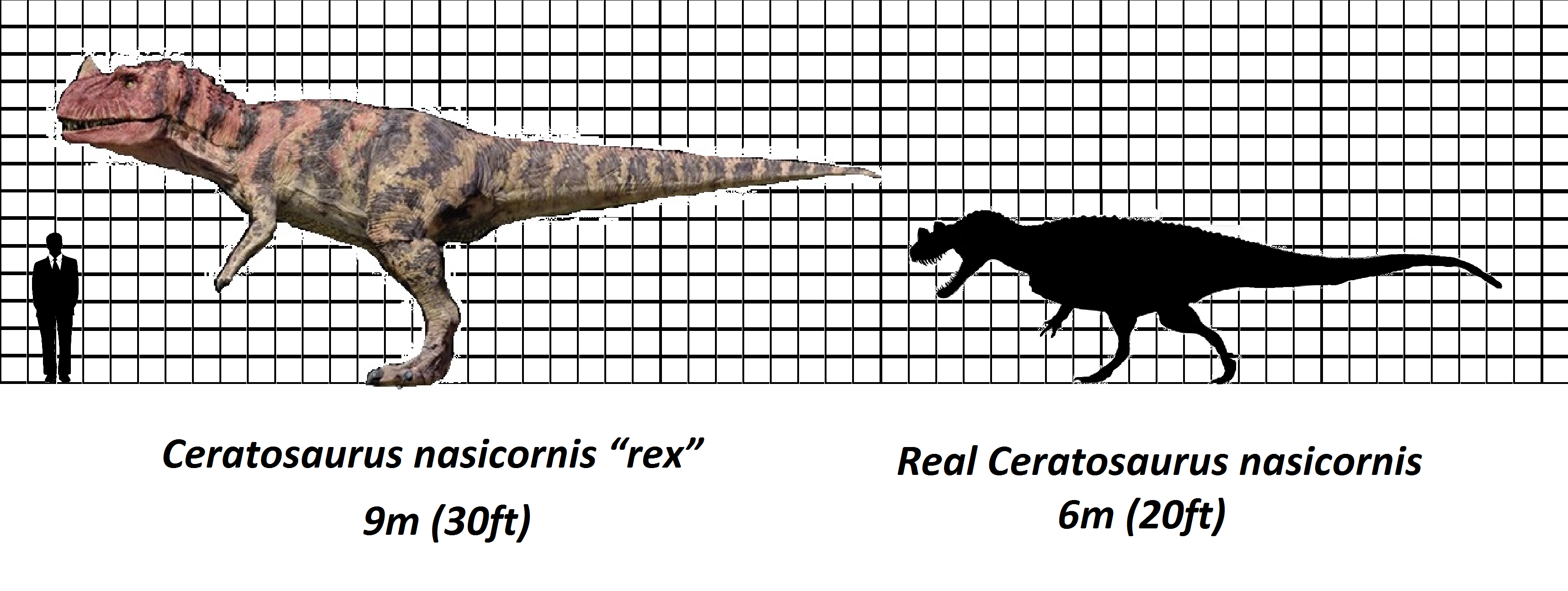Deviation Actions
Description
Animal Description: Ceratosaurus nasicornis is a medium sized carnivorous theropod dinosaur from the Late Jurassic period of the U.S. and Africa. It was first name and described by Othniel Charles Marsh in 1884 based on almost complete skeleton, including its ever so famous skull. It lived 153 to 148 million years ago in the floodplains of Jurassic North America and Africa. Discovered in the early days of Dinosaur Paleontology, it became famous for its strange headgear and imposing size. The crests of which it gets its name were short and thin, much too fragile to be used for combat. An adult Ceratosaurus can grow up to 20 feet long and weigh up to a ton.
History with InGen/Masrani: No Ceratosaurus DNA was collected by InGen at any point and the species was never meant to appear in Jurassic Park. During the illegal refurbishment of the Isla Sorna Embryonic Administration lab in 1999, InGen went forth with a project named “The Amalgam Testing” in which entirely new species were created by combining the genome of other animals. Ceratosaurus was one such experiment, and the batch was released into the wild after Sorna was abandoned for the second time.
For unknown reasons, Masrani Global never integrated this species into Jurassic World.
DNA makeup: The base genome for the InGen Ceratosaurus was Tyrannosaurus; which explains the large size and overall build, as the cloned animal resembles a long-armed Tyrannosaurus with a nose horn. If there is indeed Tyrannosaur DNA used in the cloned Ceratosaurs, this would also mean modern mammal, reptile, and amphibian DNA would be found in the Genome as well. Said nose horn may be derived from Casuarius casuarius and Rhinoceros unicornis DNA. Carnotaurus sastrei DNA would have been used to give this animal osteoderms and Herrerasaurus ischigualastensis to give it noticeable arms.
Behavior: Ceratosaurus is a large solitary nocturnal scavenger and small game hunter found exclusively on the southern portions of Isla Sorna. It typically only becomes active at the onset of total darkness, returning before sunrise. Ceratosaurs live in groups of 1 to 2 animals and are not generally territorial. They feed mainly from hadrosaur carcasses in different stages of decomposition, generally unfussy, they will eat bones, cartilage, and marrow from picked clean corpses. While primarily a scavenger, they will attack and kill living animals if the opportunity presents itself. Because of their diet, Ceratosaurs require more water than other carnivores and generally stay near large bodies of freshwater.
Ceratosaurs scavenge most often from packs of Velociraptor antirrhopus sornaensis and often bully raptors away from kills. While Ceratosaurs can easily take on a raptor one-on-one, larger packs can scare Ceratosaurs away until the raptors to leave. On rare occasions, Ceratosaurs have been known to travel with and live amongst raptor packs, with each doing the other no harm. Both predators may benefit from this unusual alliance, as the Ceratosaurs have better senses of smell and greater strength, and the raptors may be better at tracking and taking down large prey. In this sense, Ceratosaurs can be seen as hound dogs to the raptors. Sniffing out prey for the pack to hunt in return for the pack’s leftovers.
Sexual Dimorphism: There is no sexual dimorphism observed in the cloned Ceratosaurus.
Life Cycle: Male Ceratosaurs put on elegant displays of courtship for the females during the mating season, emphasizing his body and bobbing or moving his head from side to side to show off his nasal horn. Females generally prefer the bigger, more assertive males with the most prominent nose horns. Ceratosaurs are monogamous, with the male helping the female to establish a nest, raise young and feed her when chicks are born. Females generally stay with the nest while the male hunts until the chicks are able to walk. Once the chicks reach sub-adulthood, the chicks leave and the parents separate and continue living solitary lives.

































